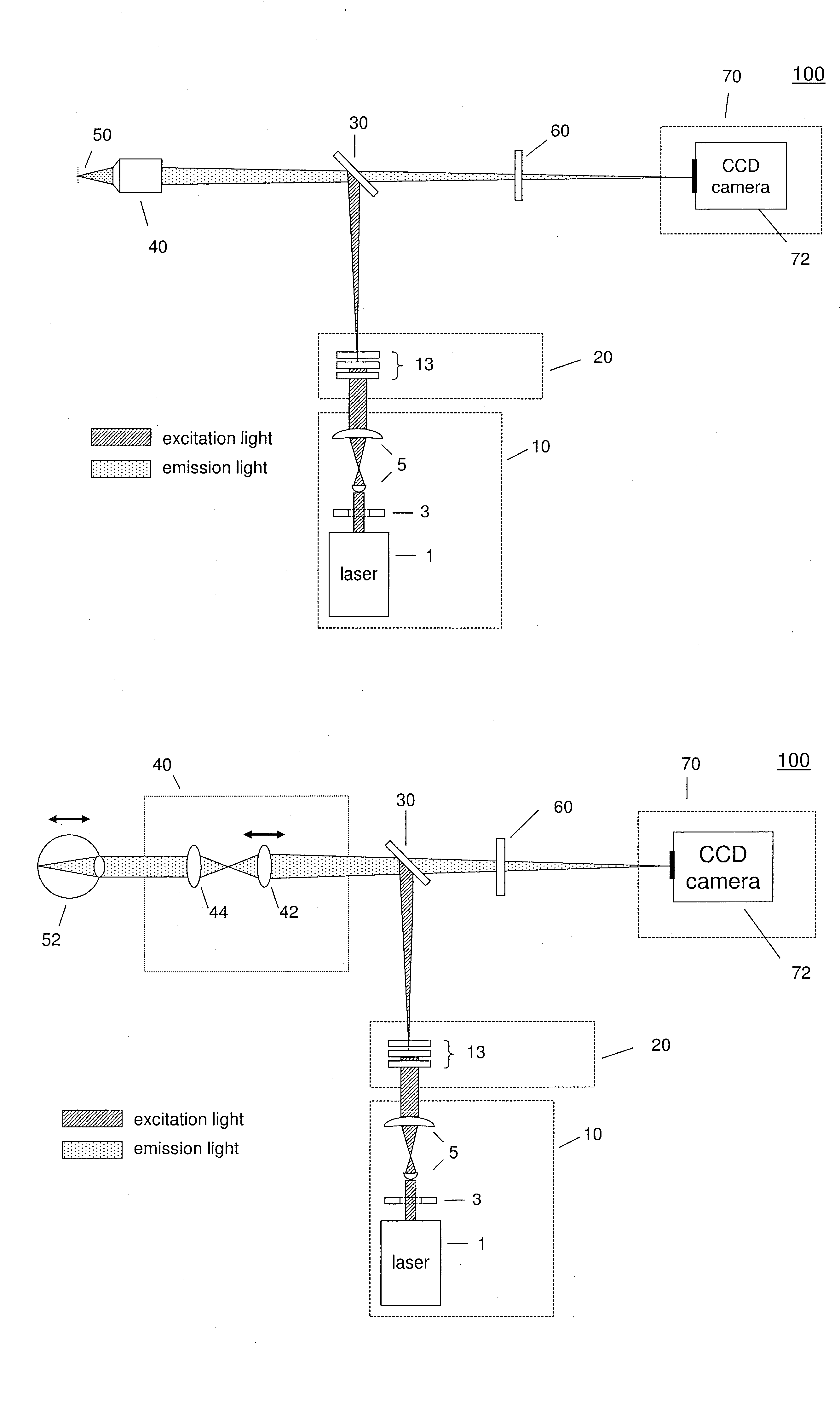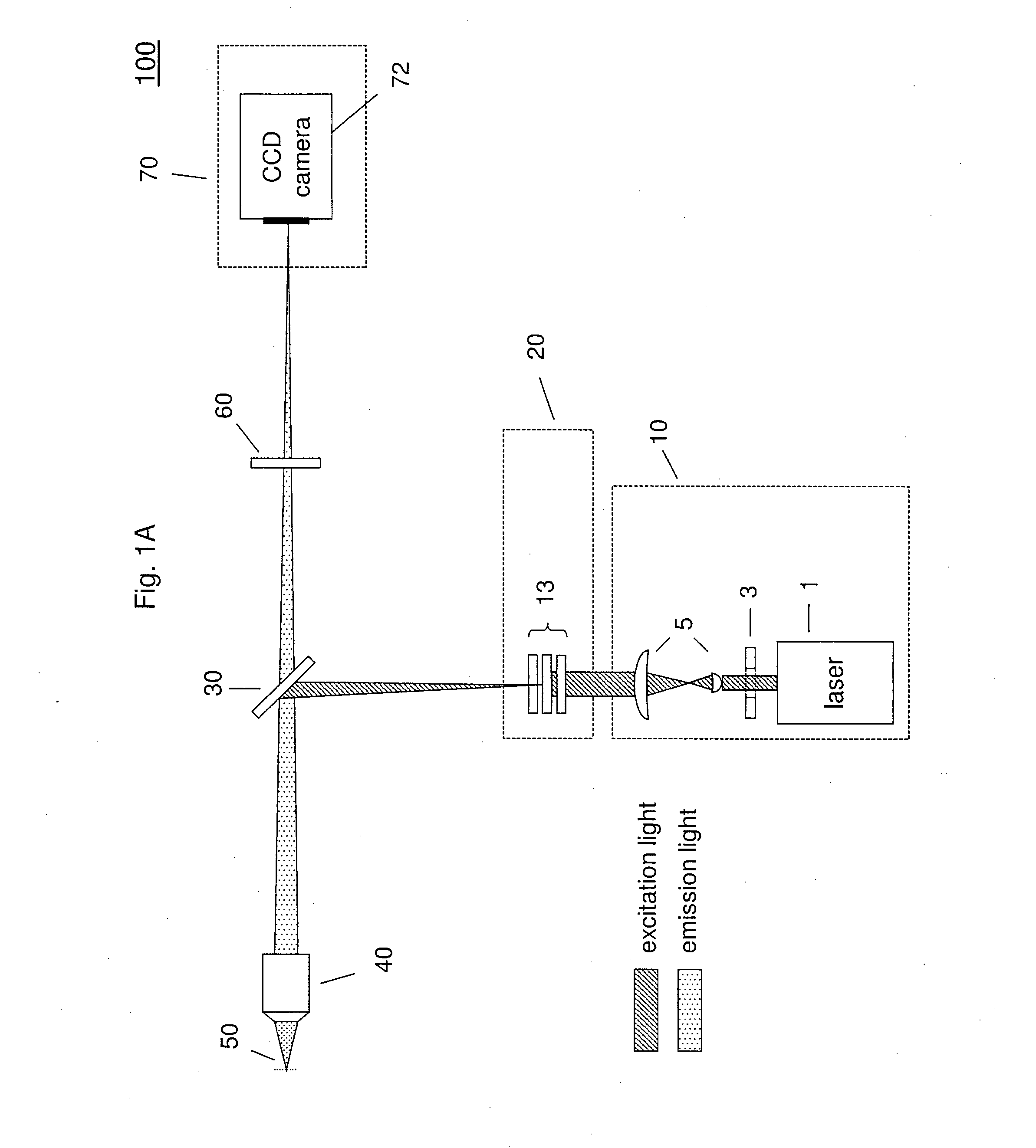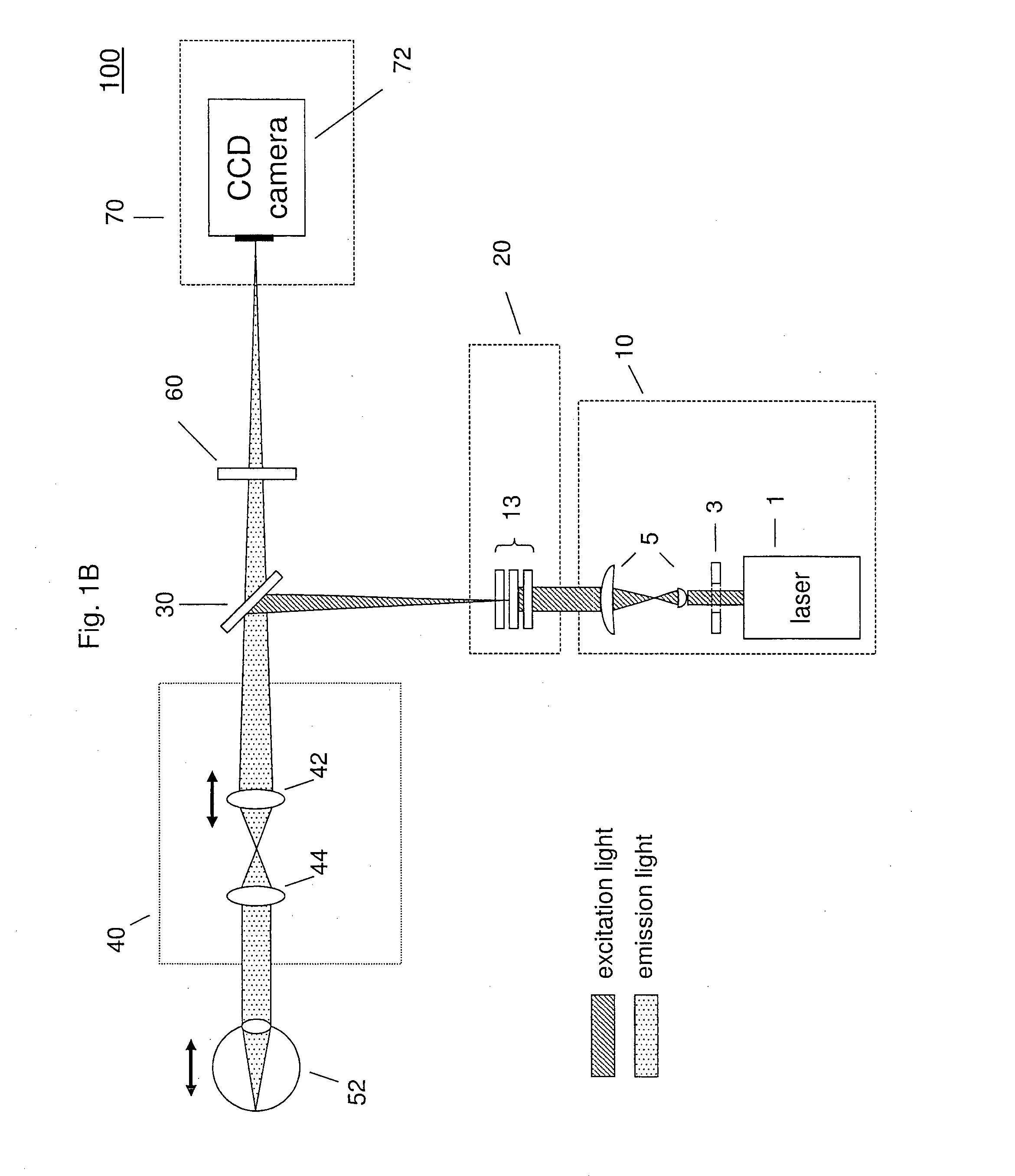Structured illumination ophthalmoscope
a structure illumination and ophthalmoscope technology, applied in the field of high resolution microscopy, can solve the problems of not being able to diagnose extrinsically (non-invasively) with conventional methods, the spatial resolution of conventional non-invasive imaging methods is not sufficient to analyse these fine fluorescent structures directly at the patient, and many disturbing effects, so as to reduce scattering and diffraction in regions outside the focus plane, less costly, and less critical
- Summary
- Abstract
- Description
- Claims
- Application Information
AI Technical Summary
Benefits of technology
Problems solved by technology
Method used
Image
Examples
Embodiment Construction
[0034]According to an example, there is provided a method for non-invasive observations of a fundus. The method includes illuminating a retinal region of an eye by projecting an illumination pattern of illumination light onto the retinal region of the eye and detecting at least a portion of fluorescent light emitted from the retinal region of the eye and / or detecting at least a portion of illumination light reflected from the retinal region of the eye, thereby capturing a series of raw images of the retinal region of the eye at a plurality of different relative positions of the retinal region of the eye with respect to the illumination pattern projected onto the retinal region of the eye. Between the capturing of at least two images of the series (for example between the capturing of each two consecutive images of the series) the relative position of the retinal region of the eye with respect to the illumination pattern projected onto the retinal region of the eye is shifted in a no...
PUM
 Login to View More
Login to View More Abstract
Description
Claims
Application Information
 Login to View More
Login to View More - R&D
- Intellectual Property
- Life Sciences
- Materials
- Tech Scout
- Unparalleled Data Quality
- Higher Quality Content
- 60% Fewer Hallucinations
Browse by: Latest US Patents, China's latest patents, Technical Efficacy Thesaurus, Application Domain, Technology Topic, Popular Technical Reports.
© 2025 PatSnap. All rights reserved.Legal|Privacy policy|Modern Slavery Act Transparency Statement|Sitemap|About US| Contact US: help@patsnap.com



